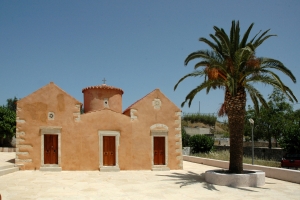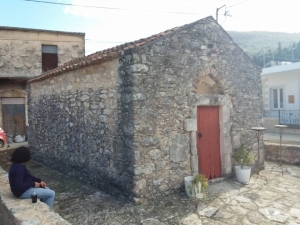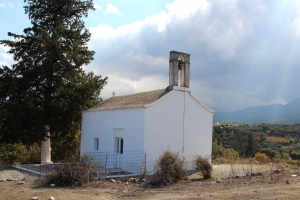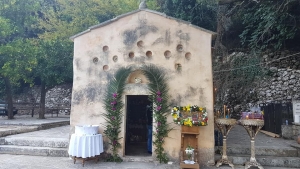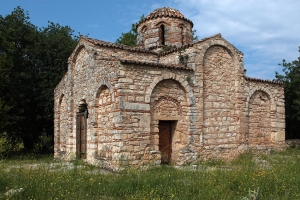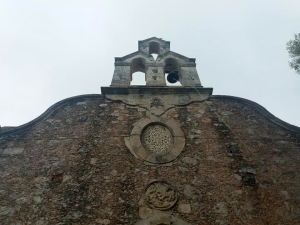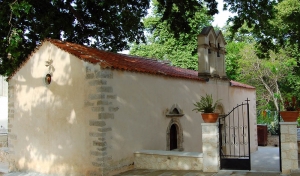At Agii Pantes village, by Fres village, there is the Byzantine church of All Saints (Agii Pantes). The church looks like a three nave basilica with smaller central nave, but is actually a cruciform temple with a large dome.
The church of Saint Nicholas (Agios Nikolaos) Maziotis is located in the village of Maza, province of Apokoronas. It is a small single naved arch-roofed temple dating back to the 13th century. Its interior has impressive frescoes by the famous hagiographer of western Crete, Ioannis Pagomenos, who is believed to be buried on the floor of the temple.
The church of Panagia Perivolitissa or Perivolitsiani is a single-aisled temple of 1570 built on a hill north of the village Nippos. The temple is dedicated to the Birth of the Virgin Mary and bears frescoes in poor condition. It is believed that the place operated as a monastery, Episcopal Seat, after the desctruction of Aptera town by an earthquake, and as a school of hagiography. In the church there are graves of monks and priests.
The church of Panagia Sourouthiani or Sirothiani is located in the outskirts of the village Alikambos in the province of Apokoronas, very close to a spring with fresh water. It is a small single-nave church dedicated to the Dormition of Theotokos (celebr. of August 15th) which is externally decorated with round ceramics called pinakia.
The church of Panagia Zerviotissa (i.e. left-handed) or Monastira is located east of the village Stylos, province Apokoronas. It is a 12th-century cruciform temple with an octagonal dome, each dome bearing a window on each side and supported by four pillars. The ground plan resembles a three-aisled basilica with three semi-cylindrical arches.
The church of the Virgin Mary (Panagia) in Kefalas, province Apokoronas, is dedicated to the Dormition of the Theotokos and celebrates on August 15th. The pillars and its enclosure date back to the mid-19th century and bear Venetian architectural elements.
The single-nave arched church of Saint John the Theologian (Agios Ioannis Theologos) is located in the central square of the village Armeni, province Apokoronas. The church was built in the 16th century on the site of an older 13th-century domed temple, which in turn was built on the site of the central aisle of a 6th-century Early Christian basilica.











